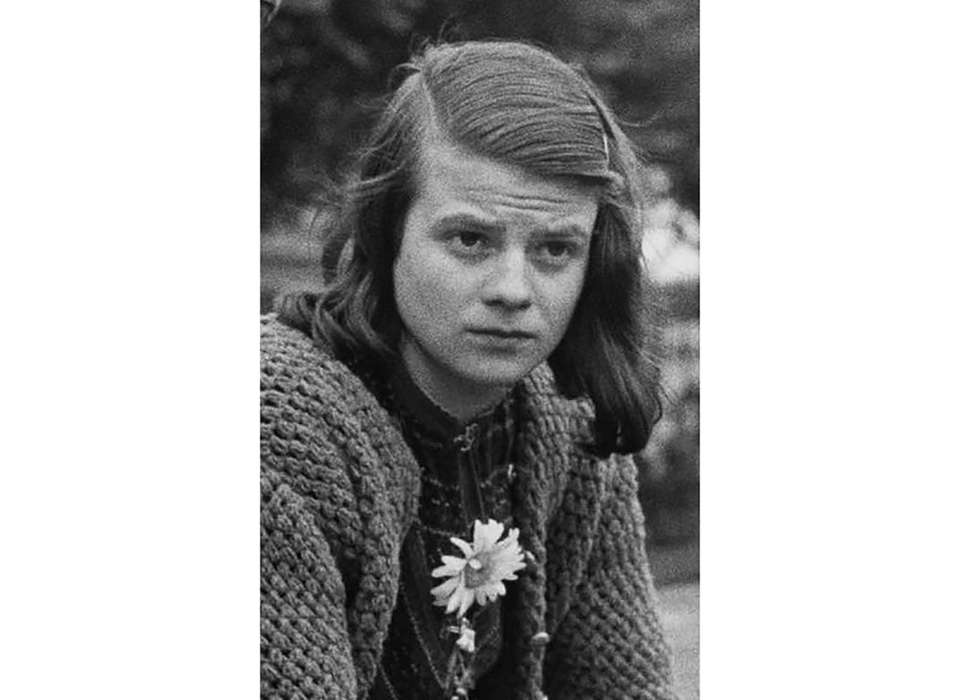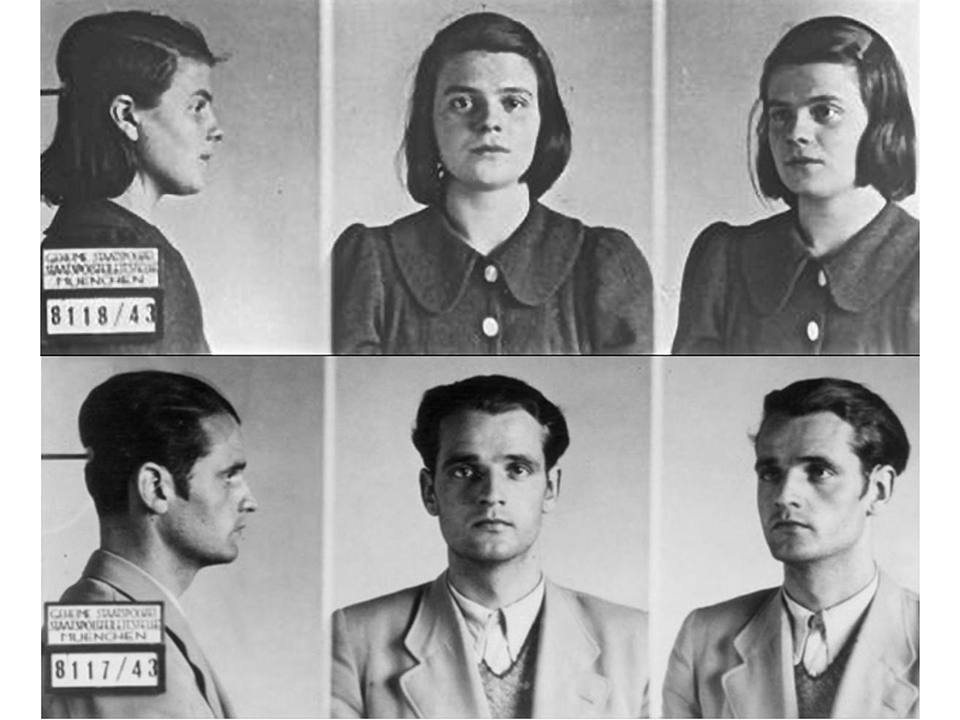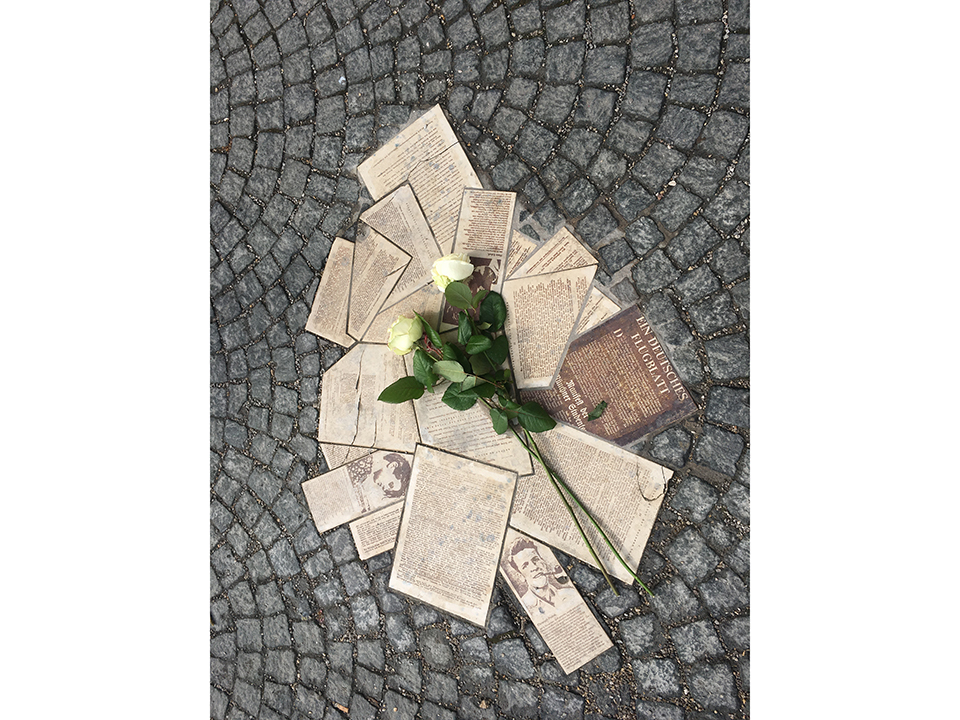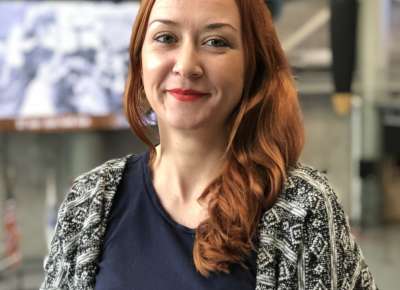Within the United States, Sophie Magdalena Scholl is not the best-known resistance fighter, but her story is a powerful one. She was a key member of the Weiße Rose (White Rose)—a resistance group run by students at the University of Munich who distributed leaflets and used graffiti to decry Nazi crimes and the political system, while calling for resistance to the Nazi state and the war. On February 22, 1943, she was beheaded for treason at just 21 years old.
Sophie was born in May 1921, the fourth of six children to an upper-middle class family in the south of Germany. Robert, her father, was mayor of Forchtenberg, an idyllic town in the northeast of the modern state of Baden-Württemberg. When Sophie was 10, the family moved to Ulm, a mid-size southern town dating back to the Middle Ages, where her father worked as state auditor and tax consultant.
After the Nazis came to power in January 1933, Sophie, along with most of her siblings, was an excited and happy follower of the National Socialist cult of youth. The teenager believed in the ideals propagated at the time. Similar to many of their contemporaries, Sophie was particularly intrigued by the focus on nature and communal experiences. She joined the BDM, the Bund Deutscher Mädel (League of German Girls) and quickly rose in their ranks. The parents, especially her father, did not like their children’s’ involvement in the Nazi youth groups and made no secret about it. A critic of the party from the beginning, who had raised their children firmly grounded in the Christian tradition, Robert Scholl viewed the developments in Germany and their children’s interest in Nazism with growing fear and horror. Lively discussions were a daily occurrence at the dinner table, teaching the children the value of open and honest conversation—a rarity at the time.
Sophie’s siblings, especially her oldest brother Hans, later to become a founding member of the Weiße Rose, also were members of non-Nazi groups of young people. These associations shared and propagated a love for nature, outdoor adventures, as well as the music, art and literature of German Romanticism. Originally seen as compatible with Nazi ideology by many, these alternative groups were slowly dissolved and finally banned by 1936. Hans remained active in one such group, however, and was arrested in 1937 along with several of the Scholl siblings. This arrest left a mark on Sophie’s conscience and began the process that eventually turned her from happy supporter of the Nazi system to active resistance fighter.
On September 1, 1939, Hitler invaded Poland and two days later, France and Britain declared war on Germany. The older Scholl brothers were sent off to fight on the front. Sophie’s life in Ulm changed as well. She graduated high school in the spring of 1940 and started an apprenticeship to become a kindergarten teacher. She eventually wanted to study biology and philosophy. In order to be admitted, students had to spend a period of time working for the state in the Reichsarbeitsdienst (RAD; National Labor Service). Sophie’s hopes that becoming a teacher would allow her to substitute for the RAD were quashed and she instead had to enter the service in the spring of 1941. She hated it. The military-like regimen and mind-numbing routine caused her to find solace in her own spirituality, guided by readings of theologian Augustine of Hippo. She wrote down her thoughts, noting that her “soul was hungry"—she longed for an autonomous life, an end to the war, and for happiness with her boyfriend Fritz Hartnagel, who was now fighting on the Eastern front. Her doubts about the regime grew.
When she finally moved to Munich to study biology and philosophy in May 1942, her brother Hans, a medical student at the same university, and some of his friends had already begun to actively question the system. Serving on the Eastern Front, they learned about the crimes committed in Poland and Russia first hand and saw the misery with their own eyes. They knew they couldn’t remain quiet. Starting in June 1942, they began printing and distributing leaflets in and around Munich, calling their fellow students and the German public to action. Other members of their circle joined in the endeavor, writing four pamphlets until the fall of the same year. As a student, Sophie had seen the flyers and applauded their content as well as their authors’ courage to speak truth to power. When she found out about her brother’s involvement, she demanded to join the group. She did not want to stay passive anymore.
The White Rose was a small endeavor with large consequences. At its core were siblings Hans and Sophie Scholl, their fellow students Alexander Schmorell, Willi Graf, Christoph Probst, and a professor of philosophy and musicology at the University of Munich, Kurt Huber. Together they published and distributed six pamphlets, first typed on a typewriter, then multiplied via mimeograph. At first, they only distributed them via mail, sending them to professors, booksellers, authors, friends and others—going through phone books for addresses and hand-writing each envelope. In the end, they distributed thousands, reaching households all over Germany. Acquiring such large amounts of paper, envelopes, and stamps at a time of strict rationing without raising suspicion was problematic, but the students managed by engaging a wide-ranging network of supporters in cities and towns as far north as Hamburg, and as far south as Vienna. These networks were also activated to distribute the pamphlets, attempting to trick the Gestapo into believing the White Rose had locations all across the country.
In reading the group’s leaflets today, one cannot help but think of how chillingly accurate they were in their accusations and calls to action, and the powerful insights they provide about Nazi Germany: The third pamphlet reads:
“Our current ‘state’ is the dictatorship of evil. We know that already, I hear you object, and we don’t need you to reproach us for it yet again. But, I ask you, if you know that, then why don’t you act? Why do you tolerate these rulers gradually robbing you, in public and in private, of one right after another, until one day nothing, absolutely nothing, remains but the machinery of the state, under the command of criminals and drunkards?”
White Rose Pamphlet
In their attempt to gain traction for the resistance and to stop the war effort, they gave clear advice and advocated sabotage of Hitler’s war machine. Their fifth pamphlet stated: “And now every convinced opponent of National Socialism must ask himself how he can fight against the present ‘state’ in the most effective way….We cannot provide each man with the blueprint for his acts, we can only suggest them in general terms, and he alone will find the way of achieving this end: Sabotage in armament plants and war industries, sabotage at all gatherings, rallies, public ceremonies, and organizations of the National Socialist Party. Obstruction of the smooth functioning of the war machine….Try to convince all your acquaintances…of the senselessness of continuing, of the hopelessness of this war; of our spiritual and economic enslavement at the hands of the National Socialists; of the destruction of all moral and religious values; and urge them to passive resistance!”
In January 1943, the group felt empowered and hopeful. Their activism seemed to be working, rattling the authorities and sparking discussions amongst their peers. Their group was well-organized and they were about to set up even more connections to other underground resistance groups. Observing the political situation in Germany in January of 1943, Sophie and the White Rose members believed a change in the country was imminent. The German army’s disastrous defeat at Stalingrad was a turning point on the Eastern Front, and voices of dissent grew louder at the University of Munich after students were publicly called out as leeches and war resisters. This encouraged them to work more boldly, distributing the flyers directly in person and writing slogans like “Down with Hitler” and “Freedom” on the walls around Munich. Their sixth—and last—pamphlet reads: “Even the most dull-witted German has had his eyes opened by the terrible bloodbath, which, in the name of the freedom and honour of the German nation, they have unleashed upon Europe, and unleash anew each day. The German name will remain forever tarnished unless finally the German youth stands up, pursues both revenge and atonement, smites our tormentors, and founds a new intellectual Europe. Students! The German people look to us! The responsibility is ours: just as the power of the spirit broke the Napoleonic terror in 1813, so too will it break the terror of the National Socialists in 1943.”
Hans and Sophie distributed them at their university on February 18, for their fellow students to find walking between classes. At some point, in what we can assume was an attempt to make even more people see the flyers, Sophie pushed a stack off a railing unto the central hall. What is now an iconic scene in every movie and documentary about the group, was the moment that changed everything. The pamphlet drop was seen by a janitor, a staunch supporter of the Nazis, who had Hans and Sophie immediately arrested by the Gestapo. The draft for the seventh pamphlet was still in Hans’ bag, which led to Christoph Probst’s arrest the same day.
The three endured a mock trial after long and arduous interrogations. They took all blame for the White Rose’s actions. This attempt to save their friends from persecution failed in the end, and Willi Graf, Alexander Schmorell, and Kurt Huber were arrested later in February and put to death shortly after.
After a half-day trial led by the infamous Roland Freisler, president of the People’s Court, Hans, Sophie, and Christoph were sentenced to death for treason. Despite this horrific prospect, Sophie did not waver. Freisler asked her as the closing question whether she hadn’t “indeed come to the conclusion that [her] conduct and the actions along with [her] brother and other persons in the present phase of the war should be seen as a crime against the community?” Sophie answered:
“I am, now as before, of the opinion that I did the best that I could do for my nation. I therefore do not regret my conduct and will bear the consequences that result from my conduct.”
Sophie Scholl
Sophie Scholl, Hans Scholl, and Christoph Probst were executed by guillotine on February 22, 1943.
While their deaths were only barely mentioned in German newspapers, they received attention abroad. In April, The New York Times wrote about student opposition in Munich. In June 1943, Thomas Mann, in a BBC broadcast aimed at Germans, spoke of the White Rose’s actions. The text of the sixth leaflet was smuggled into the United Kingdom where they were reprinted and dropped over Germany by Allied planes in July of the same year.
In post-war Germany, the White Rose was and is revered. A myriad of schools, streets, and a prestigious award are named after individual members, the group or the siblings Scholl. Sophie’s story looms especially large in the history of Ulm, my hometown. She personifies the importance of acting according to one’s beliefs and of following your conscience, even in the face of great sacrifice. In our collective memory, her story reminds us to not be silent, and fight for what Sophie wrote on the back of her indictment a day before she was killed: Freiheit—Freedom.
English texts of the pamphlets are from White Rose Translation Project and The Holocaust Research Project.
Tanja B. Spitzer
Tanja B. Spitzer, a native of Germany who came to New Orleans a little over a decade ago to study at Tulane University, is an expert on transatlantic history and cultural diplomacy.
Cite this article:
MLA Citation:
APA Citation:
Chicago Style Citation:








![Max Fuchs, New York City cantor, sings as Rabbi Sydney [sic] Lefkowitz, Richmond, VA, conducts the first Jewish services from Germany.](/sites/default/files/styles/max_650x650/public/2025-10/image1.jpg)



